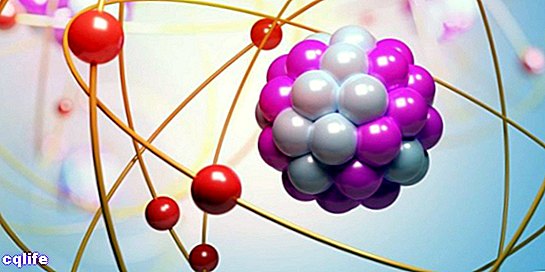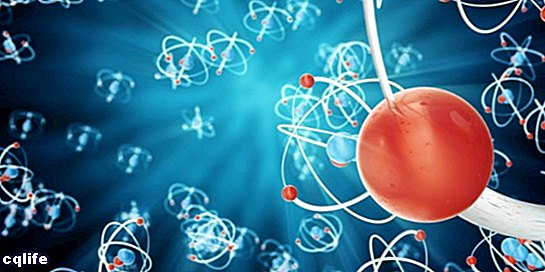We explain what an electron is, what its characteristics are and how was the discovery of this subatomic particle.

What is an electron?
An electron is a type ofsubatomic particle that showselectric charge negative and actively orbiting the atomic nucleus (composed ofprotons Yneutrons), which has a positive electrical charge.
The size of an electron is 1836 times smaller than that of protons (they contribute 0.06% of the total mass of an atom) and, having no substructures or divisions, it is considered an elementary particle of the matter.
Electrons play an essential role in certain forces and physical phenomena of the nature, as theelectricity, themagnetism waveThermal conductivity, and to a large extent determine the atomic bonds, both ionic (of loss or gain of electrons) or covalent (of joint use of electrons). Electrons generate electric fields that affect charged particles around them.
The origin of electrons, according to the most accepted theory regarding the origin of theuniverse, indicates that they were formed during the first milliseconds of the big Bang, whose temperatures they exceeded 1010 K, enough to form pairs of positrons (e +) - electrons (e-) that annihilated each other because they had opposite electrical charges.
For unknown reasons, the number of electrons was much higher than that of protons, so they survived and began to be attracted to the first protons when the universe cooled enough, thus forming the most elementary atoms in nature.
The number of electrons in the atoms of the matter determines that it has a neutral charge (balance between protons and electrons), positive (shortage of electrons) or negative (excess electrons).
At the same time, there are "free" electrons that can move from one atom to another in matter, generating electric fluxes or magnetic fields, depending on the temperature at which they are. There are materials that are known as drivers, in which electrons can move freely from atom to atom and thus generate flows of atoms in motion, which is known as electric current.
See also:Rutherford atomic model
Characteristics of an electron

Electrons belong to a type of elementary particle called leptons. There are also two other groups of elementary particles called quarks and bosons. For each type of particle there are three families or generations.
Electrons are the lowest mass electrically charged leptons in the set, and belong to the first generation of fundamental particles (the second and third generation contain muon and tau particles).
Themass of an electron is always 9.019 x 10-31 kg and its respective electric charge is -1.602 x 10-19 coulomb, which represents a charge identical to that of the proton, but with the opposite sign. This measure is known as the elemental charge of nature.
Who discovered the electron?
The electron was discovered at the end of the 19th century, thanks to successive investigations in the field of electrical conductivity in gases. Using cathode rays, phenomena were observed that led to the conclusion that these rays were negatively charged particles, initially called corpuscles and that they had one thousandth of the mass of theion hydrogen, the least massive of all atoms. The curious thing is that by varying the nature of the gas used, these particles retained all their characteristics.
At the end of the 19th century, the Irishman George Francis Fitzgerald baptized them “electrons”, a name that from the beginning enjoyed general acceptance. The belonging of these particles to the structure of the atom was postulated around 1900, thanks to the experiments Rutherford, Moseley, Franck and Hertz, and atatomic model later proposed by Niels Bohr.
